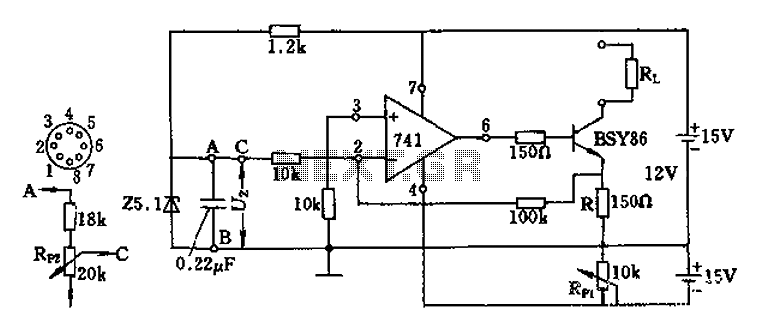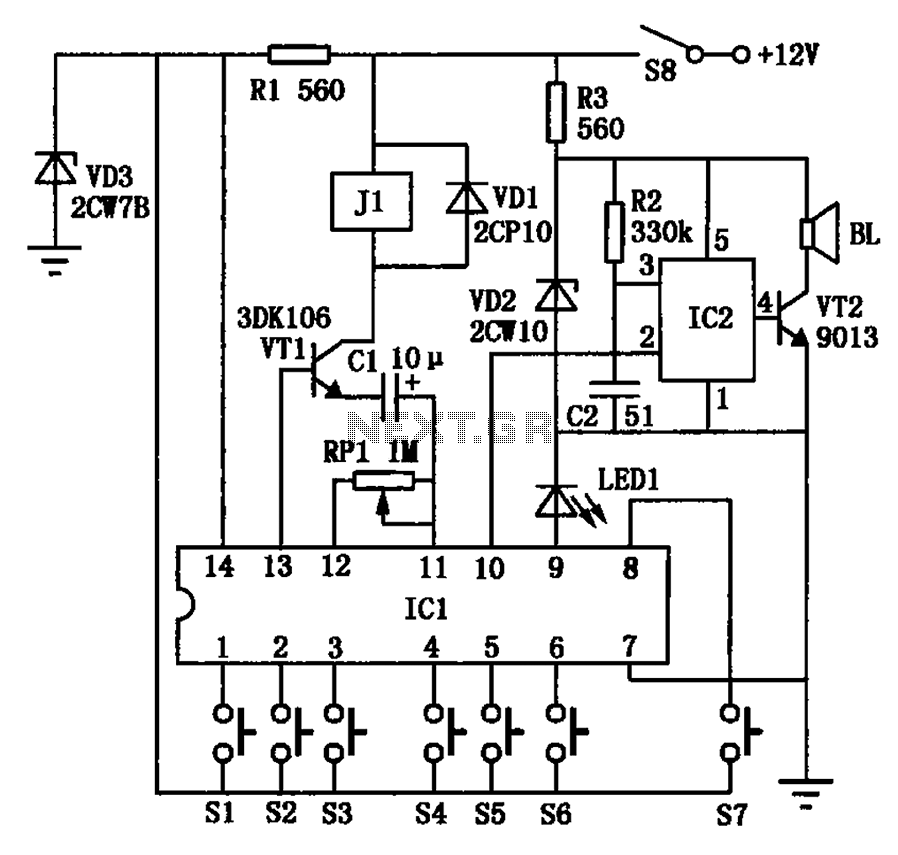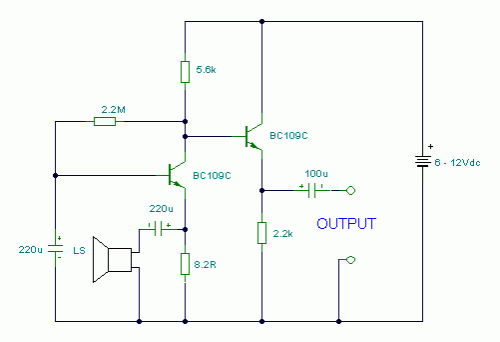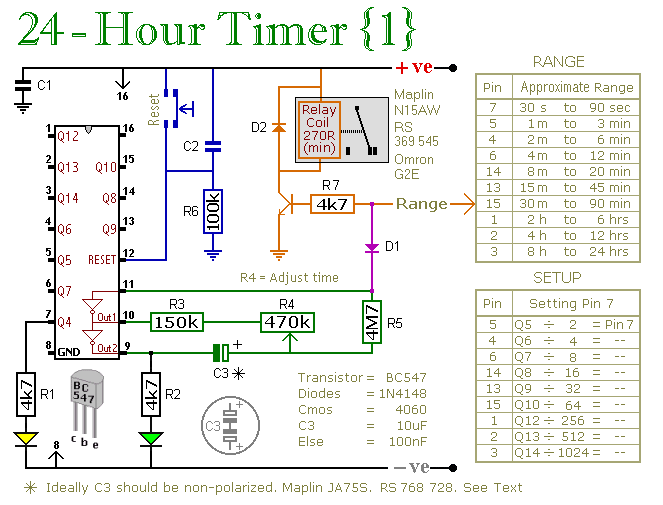
Transistor current mirror circuit
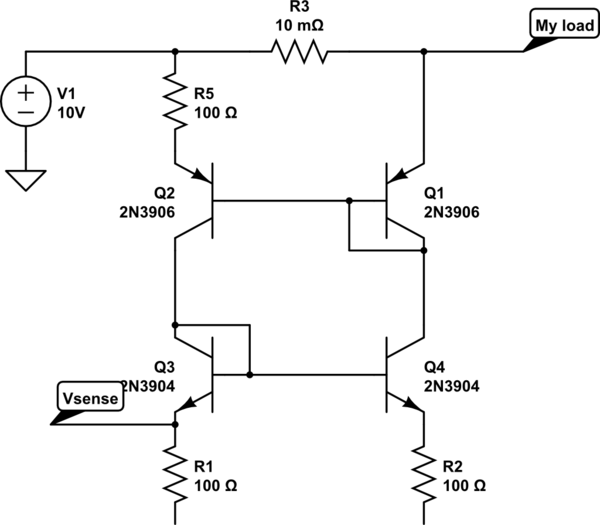
The bases and emitters of the transistors are connected together, resulting in equal base-emitter voltages. Assuming the transistors are identical, equal Vbe leads to equal base currents, which in turn results in equal collector-emitter currents. By adjusting the voltage and resistance in one transistor, the current through the other transistor is also set. An approach for overcurrent detection involves placing a second resistor in the mirrored leg and measuring the voltage across it. If this voltage exceeds a predetermined level, it indicates that the current has surpassed the setpoint. However, the efficacy of this method compared to measuring the voltage on the primary leg is uncertain. The circuit is designed to monitor the safe current sourced by the supply, enabling overcurrent detection. An alternative suggestion includes placing a resistor between the secondary source and the secondary transistor to measure voltage across that resistor. Nonetheless, using a shunt resistor in the primary is simpler and yields similar results. Current mirrors are commonly utilized in overcurrent protection systems because they facilitate a voltage reference shift from Vin to ground. Implementing a high-side current mirror with PNP transistors and positioning the secondary load between the collector of the secondary transistor and ground provides a ground-referenced voltage proportional to the high-side load current. The resistor value can be adjusted to determine the circuit's gain.
The described circuit employs a configuration of transistors where the bases and emitters are interconnected, ensuring that the base-emitter voltages (Vbe) remain consistent across the devices. This arrangement is crucial for maintaining equal currents flowing through the base and subsequently through the collector-emitter paths of the transistors. The principle of current mirroring is applied here, which is fundamental in various analog applications, including overcurrent protection systems.
To implement an overcurrent detection mechanism, a secondary resistor can be introduced in the mirrored leg of the circuit. The voltage drop across this resistor is monitored; if it exceeds a specified threshold, it indicates that the current flowing through the circuit has surpassed the safe operating limit. This method allows for a precise measurement of the current without directly interfering with the primary circuit operation.
Alternatively, the circuit can be simplified by placing a shunt resistor in the primary leg, which provides a direct measurement of the current flowing through the supply. This alternative method is often preferred due to its straightforward implementation and effectiveness in providing accurate current readings.
Current mirrors are particularly advantageous in high-side applications where the load is connected to a positive supply voltage. By using PNP transistors in the current mirror configuration, the circuit can reference the ground voltage, making it easier to monitor the load current. The secondary load is connected between the collector of the secondary transistor and ground, allowing for a proportional voltage signal that reflects the load current. This configuration enhances the reliability of the overcurrent protection system by ensuring that the voltage reference remains stable and accurately reflects the operating conditions.
The gain of the circuit can be adjusted by varying the resistor values, allowing for fine-tuning of the sensitivity and response of the overcurrent detection mechanism. This flexibility is essential for adapting the circuit to different applications and ensuring optimal performance in various operating environments. Overall, the described circuit provides a robust solution for monitoring and protecting against overcurrent conditions in electronic systems.The bases and emitters are tied together, so the base-emitter voltages are equal. Since we assume the transistors themselves are identical, equal Vbe means equal current into the base. And equal current into the base means equal current from collector to emitter. Thus by setting the current through one, by the selection of voltage and resistance, you also set the current through the other. One way of doing an overcurrent detector would be to put a second resistor in the mirrored leg, and measure the voltage across that resistor. If it rises above some fixed level, the current must have exceeded your setpoint. I`m not immediately sure why that would be better than measuring the voltage on the primary leg, though.
At first glance, this seems like a pretty round-about way of doing an overcurrent limit. Thanks Remiel. I have a supply and the load between which this circuit is connected to monitor the safe current that is sourced by the supply. So I need to use this circuit to detect the over current drawn from the supply. So is there anyway that i can do with this Durgaprasad Mar 20 `13 at 17:02 Yes, you could put a resistor between the secondary source and the secondary transistor, and measure the voltage across that resistor.
But again, a shunt resistor in the primary would be simpler and should have nearly identical effect. Stephen Collings Mar 20 `13 at 18:21 Current mirrors are often used in overcurrent protection because it allows a shift of the voltage reference from Vin to Gnd. Use a high-side current mirror (PNP transistors instead of NPN) and put the "secondary load" between the collector of the secondary transistor and ground.
Now you have a ground-referenced voltage that`s proportional to the high-side load current. Note that the value of the resistor can be varied to determine the "gain" of the circuit. 🔗 External reference
The described circuit employs a configuration of transistors where the bases and emitters are interconnected, ensuring that the base-emitter voltages (Vbe) remain consistent across the devices. This arrangement is crucial for maintaining equal currents flowing through the base and subsequently through the collector-emitter paths of the transistors. The principle of current mirroring is applied here, which is fundamental in various analog applications, including overcurrent protection systems.
To implement an overcurrent detection mechanism, a secondary resistor can be introduced in the mirrored leg of the circuit. The voltage drop across this resistor is monitored; if it exceeds a specified threshold, it indicates that the current flowing through the circuit has surpassed the safe operating limit. This method allows for a precise measurement of the current without directly interfering with the primary circuit operation.
Alternatively, the circuit can be simplified by placing a shunt resistor in the primary leg, which provides a direct measurement of the current flowing through the supply. This alternative method is often preferred due to its straightforward implementation and effectiveness in providing accurate current readings.
Current mirrors are particularly advantageous in high-side applications where the load is connected to a positive supply voltage. By using PNP transistors in the current mirror configuration, the circuit can reference the ground voltage, making it easier to monitor the load current. The secondary load is connected between the collector of the secondary transistor and ground, allowing for a proportional voltage signal that reflects the load current. This configuration enhances the reliability of the overcurrent protection system by ensuring that the voltage reference remains stable and accurately reflects the operating conditions.
The gain of the circuit can be adjusted by varying the resistor values, allowing for fine-tuning of the sensitivity and response of the overcurrent detection mechanism. This flexibility is essential for adapting the circuit to different applications and ensuring optimal performance in various operating environments. Overall, the described circuit provides a robust solution for monitoring and protecting against overcurrent conditions in electronic systems.The bases and emitters are tied together, so the base-emitter voltages are equal. Since we assume the transistors themselves are identical, equal Vbe means equal current into the base. And equal current into the base means equal current from collector to emitter. Thus by setting the current through one, by the selection of voltage and resistance, you also set the current through the other. One way of doing an overcurrent detector would be to put a second resistor in the mirrored leg, and measure the voltage across that resistor. If it rises above some fixed level, the current must have exceeded your setpoint. I`m not immediately sure why that would be better than measuring the voltage on the primary leg, though.
At first glance, this seems like a pretty round-about way of doing an overcurrent limit. Thanks Remiel. I have a supply and the load between which this circuit is connected to monitor the safe current that is sourced by the supply. So I need to use this circuit to detect the over current drawn from the supply. So is there anyway that i can do with this Durgaprasad Mar 20 `13 at 17:02 Yes, you could put a resistor between the secondary source and the secondary transistor, and measure the voltage across that resistor.
But again, a shunt resistor in the primary would be simpler and should have nearly identical effect. Stephen Collings Mar 20 `13 at 18:21 Current mirrors are often used in overcurrent protection because it allows a shift of the voltage reference from Vin to Gnd. Use a high-side current mirror (PNP transistors instead of NPN) and put the "secondary load" between the collector of the secondary transistor and ground.
Now you have a ground-referenced voltage that`s proportional to the high-side load current. Note that the value of the resistor can be varied to determine the "gain" of the circuit. 🔗 External reference
